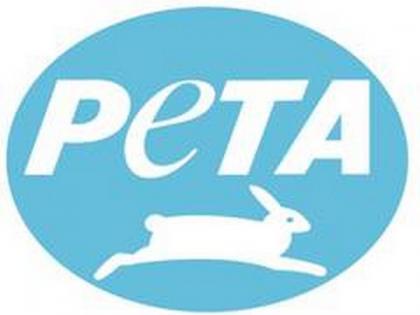Elimination of TB in humans impossible without addressing it in animals: PETA India
By ANI | Updated: June 19, 2020 13:00 IST2020-06-19T12:44:56+5:302020-06-19T13:00:03+5:30
It is impossible to eliminate Tuberculosis (TB) in human until and unless the disease in animals is meticulously addressed, said the People for the Ethical Treatment of Animals (PETA) India.

Elimination of TB in humans impossible without addressing it in animals: PETA India
It is impossible to eliminate Tuberculosis (TB) in human until and unless the disease in mals is meticulously addressed, said the People for the Ethical Treatment of mals (PETA) India.
PETA response comes after the Ministry of Health and Family Welfare (MoHFW) issued a notice seeking stakeholder's input for drafting the National Strategic Plan to End Tuberculosis in India 2020-2025.
PETA India CEO and veterinarian Dr Mlal Valliyate told : "Without a plan to address the high prevalence of tuberculosis (TB) in mals (such as bovines and elephants) and its role in zoonosis (the spread of disease from other mals to humans) and reverse zoonosis, the elimination of human TB in India is impossible."
"7.3 per cent of India's bovine population, an estimated 21.8 million cattle, including those used for dairy, are infected with tuberculosis," said PETA.
The orgsation cited an Indian study that says 12.6 per cent of humans in one group was found to be carrying bacteria that causes bovine TB, and consumption of raw milk was found to be a key factor in their infection.
Other scientific studies shared by the group indicate incidences of TB in elephants, sheep, pigs, chickens, and wild birds raised in captivity.
Explaining the risk, the PETA states, "the risk of zoonosis is there wherever there is close interaction between mals bred for use by humans, such as for milk, egg, meat and for other forms of entertainment."
"We have requested that Central Tuberculosis Division advise the Ministry of Fisheries, mal Husbandry and Dairying to prohibit the exhibition and training of elephants for performances, including joy rides and other human-mal interactions since these are not considered a necessity under the law. A public-health warning from the Ministry of Health about TB risk from raw milk consumption, which may be especially common in rural areas, would also help," said Dr Valliyate.
A scientific study of 600 elephants in South India indicates a high prevalence of asymptomatic M tuberculosis infection. Another study found human-to-elephant and elephant-to-human transmission of M tuberculosis between mahouts and captive elephants. In addition, a recent paper confirmed TB caused by reverse zoonosis in three wild elephants in South India.
The laboratory procedures most commonly used for testing TB do not differentiate human and mal TB.
Moreover, a confirmatory diagnosis of TB in mals can be made only through bacterial culture and identification of the TB orgsm in the laboratory, and this process can take eight weeks or more, observes PETA.
( With inputs from ANI )
Open in app